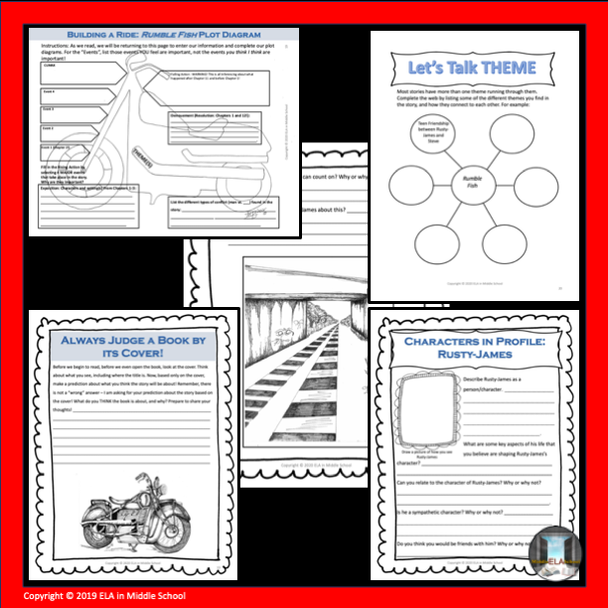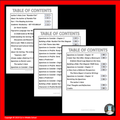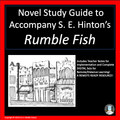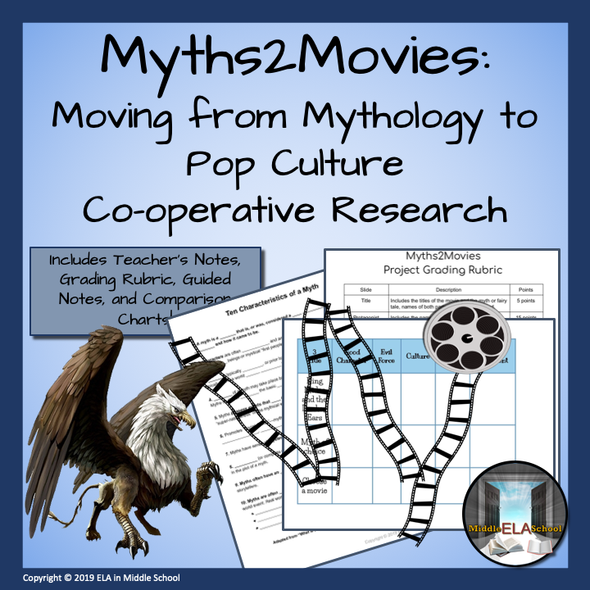Description
Analyze Plot, Character Development and Growth, Theme, and Setting within the classic S. E. Hinton novel Rumble Fish! This 64-page study guide/student workbook is designed to guide your literary students to becoming literary scholars! It is designed to teach young scholars critical thinking skills as they conduct deep analysis of the text. This Guide begins by taking students through pre-reading research into the social and educational environment of the 1960s. KWL and Research/Discussion charts help students understand and connect to the lives of Rusty-James, Steve, and Motorcycle Boy. Key Academic vocabulary charts help scholars gain a mastery of new academic vocabulary, and deepening their understanding of vocabulary they have already been exposed to.
The depth of knowledge questioning BEGINS at level 3 and takes students to level 4 from the first chapter onwards. Throughout the chapters, your scholars will engage with the characters through “Characters in Profile” pages, complete plot analysis, discuss and determine themes, and connect with the text in meaningful ways. A special aspect of Rumble Fish for you and your student-scholars to engage with is the ambiguity of the setting of “Anywhere, USA”, a great departure for Hinton, who first gained fame for her concrete reality of Tulsa in The Outsiders.
Objectives: Students will:
1. 7.2(A) use print or digital resources to determine the meaning, syllabication, pronunciation, word origin, and part of speech
2. 7.2(B) use context such as contrast or cause and effect to clarify the meaning of words
3. 7.5(A) establish purpose for reading assigned and self-selected texts
4. 7.5(B) generate questions about text before, during, and after reading to deepen understanding and gain information
5. 7.5(C) make, correct, or confirm predictions using text features, characteristics of genre, and structures
6. 7.5(E) make connections to personal experiences, ideas in other texts, and society
7. 7.5(F) make inferences and use evidence to support understanding
8. 7.5(G) evaluate details read to determine key ideas
9. 7.5(I) monitor comprehension and make adjustments such as re-reading, using background knowledge, asking questions, and annotating when understanding breaks down
10. 7.6(B) write responses that demonstrate understanding of texts, including comparing sources within and across genres
11. 7.6(C) use text evidence to support an appropriate response
12. 7.6(D) paraphrase and summarize texts in ways that maintain meaning and logical order
13. 7.6(E) interact with sources in meaningful ways such as notetaking, annotating, free writing, or illustrating
14. 7.6(I) reflect on and adjust responses as new evidence is presented
15. 7.7(A) infer multiple themes within and across texts using text evidence
16. 7.7(B) analyze how characters' qualities influence events and resolution of the conflict
17. 7.7(C) analyze plot elements, including the use of foreshadowing and suspense, to advance the plot
18. 7.7(D) analyze how the setting influences character and plot development
19. 7.8(A) demonstrate knowledge of literary genres such as realistic fiction, adventure stories, historical fiction, mysteries, humor, myths, fantasy, and science fiction
20. 7.9(A) explain the author's purpose and message within a text
21. 7.9(F) analyze how the author's use of language contributes to mood, voice, and tone
NOTE: Although the above Objectives are listed for 7th grade, these are the new 2017 TEKS, and as such are linear in progression. Please refer to your grade’s standards and objectives.
Teacher Prep Time: Variable depending on school/district resources for printing and binding.
Lesson Duration: Due to this being a novel study, this will vary according to how much time teachers are able to dedicate to reading the novel. If completed as a chapter per day: 25 minutes per day, 15 to 20 class days.
Included in This Product:
Novel Study Guide/Student Work Book containing:
1. Pre-reading research recommendations with KW and research/discussion charts
2. Pre-reading Key Academic Vocabulary charts
3. 12 different chapter “Questions to Consider” sections
4. 4 “Characters in Profile” character analysis sections
5. 1 Creative Writing exercise
6. Plot diagrams for both the book and the students’ lives for connections
7. Theme discussion webs
8. Doodle art for diverse learners
9. Original copyrighted artwork
10. Sentence stems for differentiation in early sections
11. 4 different Workbook covers to choose from!
Teacher notes for implementation
Aligned to TEKS (in effect Fall 2019): 8.2, B, D, E; 8.3C; 8.6a, B, C; 8.22A, B
Aligned to CCSS: CCSS.ELA-LITERACY.RL.8.1, 8.2, 8.3, 8.4, 8.9, 8.10; CCSS.ELA-LITERACY.W.8.1B,8.3 (all), 8.4, 8.5, 8.7, 8.8, 8.9
Please note that while our previews, and the PDF, are in color, we have also test printed in black and white, with no loss in usability. So, although color is recommended, if costs for your school or district make this prohibitive, the guide is still fully accessible. Additionally, although we recommend binding the workbook (and using cardstock for the cover and last page), this is also not required for success!
This lesson is appropriate for grades 7-12.
ELA in Middle School
Frames used in this product are by Lovin’ Lit and by Mad Clips Factory.
Cover Art: Original Pen and Ink Sketches were commissioned by ELA in Middle School from Megan Jean Burson, and are copyrighted 2020 by ELA in Middle School and Megan Burson.
Become a follower to receive updates about new products as we add them.
LICENSING TERMS: By purchasing this product, you own a license for one teacher only for personal use in your classroom. Licenses are non-transferable, meaning they cannot be passed from one teacher to another. No part of this resource is to be shared with colleagues or used by an entire grade level, school, or district without purchasing the proper number of licenses.
COPYRIGHT TERMS: ©ELA in Middle School. Please note – all material included in this resource belongs to ELA in Middle School, except where indicated. By purchasing, you have a license to use the material, but you do not own the material. This resource, or any portion of this resource, may not be uploaded to the internet in any form, including classroom/personal websites or network drives, unless the site is password protected and can only be accessed by students—no other teachers or anyone else on the internet.













